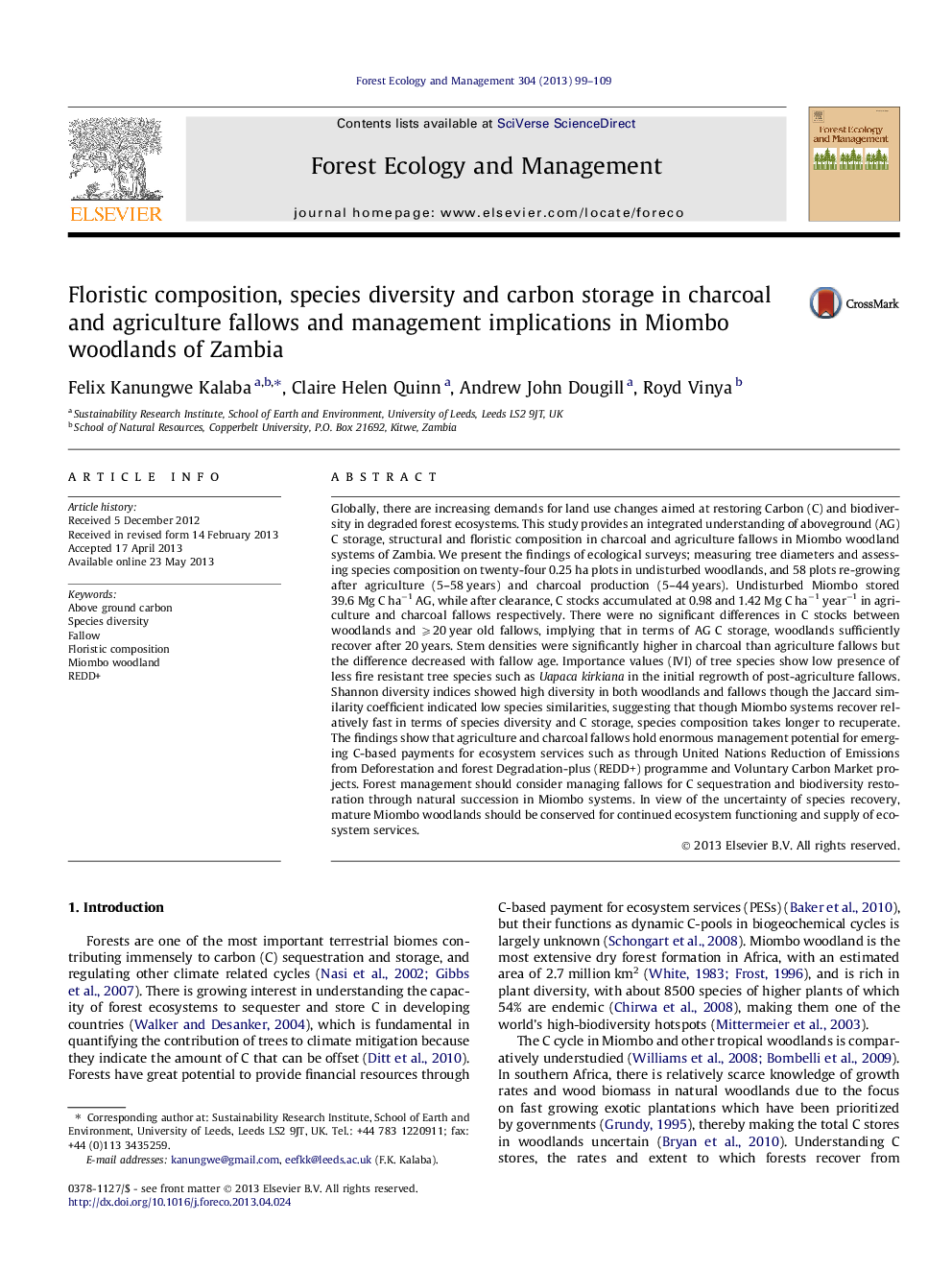| Article ID | Journal | Published Year | Pages | File Type |
|---|---|---|---|---|
| 6544207 | Forest Ecology and Management | 2013 | 11 Pages |
Abstract
Globally, there are increasing demands for land use changes aimed at restoring Carbon (C) and biodiversity in degraded forest ecosystems. This study provides an integrated understanding of aboveground (AG) C storage, structural and floristic composition in charcoal and agriculture fallows in Miombo woodland systems of Zambia. We present the findings of ecological surveys; measuring tree diameters and assessing species composition on twenty-four 0.25 ha plots in undisturbed woodlands, and 58 plots re-growing after agriculture (5-58 years) and charcoal production (5-44 years). Undisturbed Miombo stored 39.6 Mg C haâ1 AG, while after clearance, C stocks accumulated at 0.98 and 1.42 Mg C haâ1 yearâ1 in agriculture and charcoal fallows respectively. There were no significant differences in C stocks between woodlands and ⩾20 year old fallows, implying that in terms of AG C storage, woodlands sufficiently recover after 20 years. Stem densities were significantly higher in charcoal than agriculture fallows but the difference decreased with fallow age. Importance values (IVI) of tree species show low presence of less fire resistant tree species such as Uapaca kirkiana in the initial regrowth of post-agriculture fallows. Shannon diversity indices showed high diversity in both woodlands and fallows though the Jaccard similarity coefficient indicated low species similarities, suggesting that though Miombo systems recover relatively fast in terms of species diversity and C storage, species composition takes longer to recuperate. The findings show that agriculture and charcoal fallows hold enormous management potential for emerging C-based payments for ecosystem services such as through United Nations Reduction of Emissions from Deforestation and forest Degradation-plus (REDD+) programme and Voluntary Carbon Market projects. Forest management should consider managing fallows for C sequestration and biodiversity restoration through natural succession in Miombo systems. In view of the uncertainty of species recovery, mature Miombo woodlands should be conserved for continued ecosystem functioning and supply of ecosystem services.
Related Topics
Life Sciences
Agricultural and Biological Sciences
Ecology, Evolution, Behavior and Systematics
Authors
Felix Kanungwe Kalaba, Claire Helen Quinn, Andrew John Dougill, Royd Vinya,
